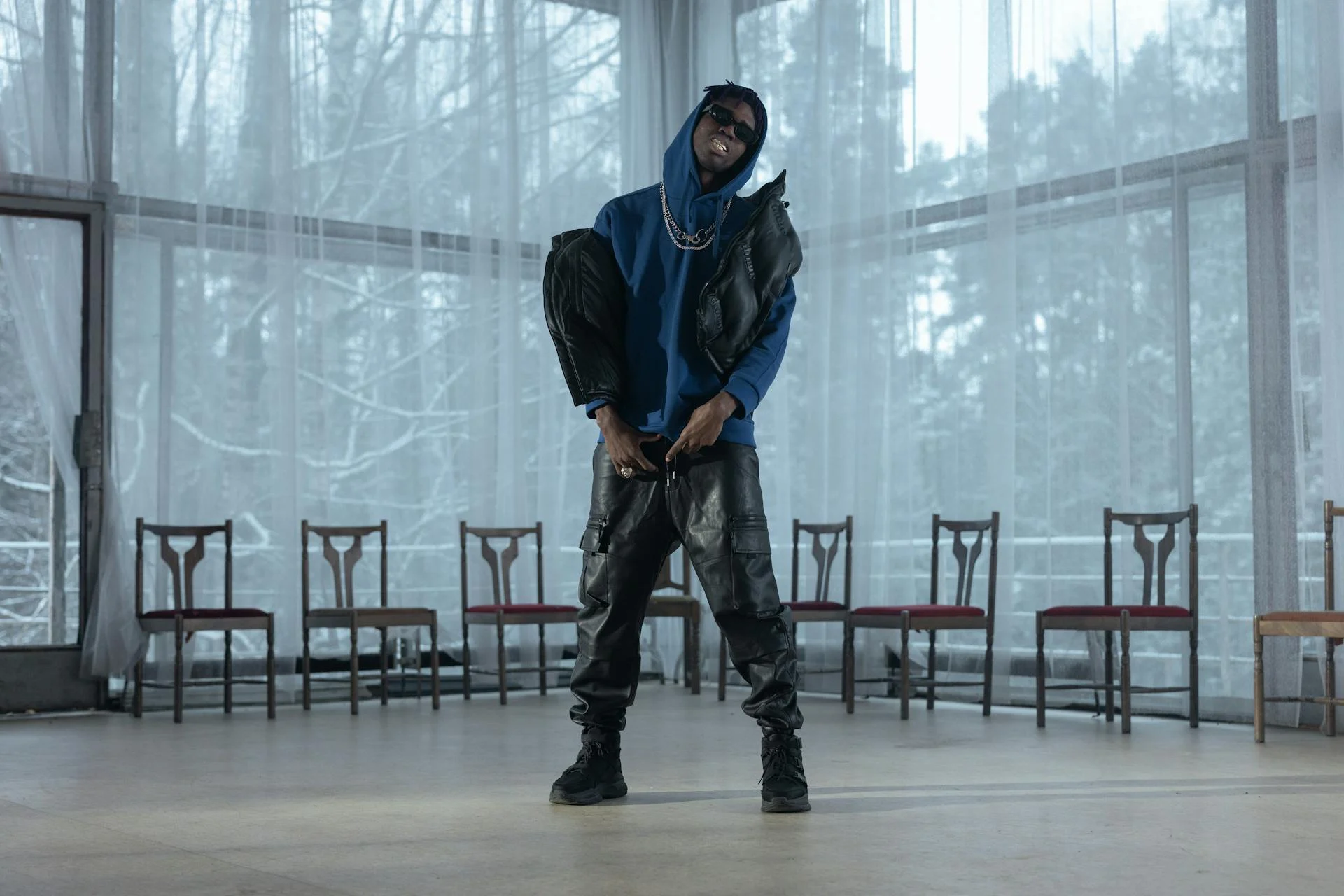
Blog
-
Divest Impex
Cargo Pants Production: A Guide to Manufacturing for Brands

Mins To Read
Table of Contents
ToggleThe global streetwear scene is witnessing a massive resurgence, and at the heart of it is a utilitarian icon reimagined for the modern era. The process of cargo pants production has evolved significantly to keep up with this trend, moving from military surplus to high-fashion runways. For any emerging or established brand, understanding the nuances of the cargo pants production process is crucial to meeting consumer demand and building a loyal following. This guide will walk you through the entire journey, from initial concept to final product.
1. The Cargo Renaissance: Why This Pant is a Streetwear Staple Again
Once a symbol of 90s subculture and practicality, cargo pants have made a powerful comeback. But why now? The current fashion landscape, heavily influenced by social media and a desire for functional yet stylish apparel, has created the perfect environment. Consumers are drawn to their versatility and gender-neutral appeal. As noted by major fashion publications like Vogue, their return signifies a shift towards more relaxed silhouettes, directly impacting the approach to modern cargo pants production.
2. Anatomy of a Modern Cargo: What Buyers Actually Want Today
Today’s consumer isn’t just looking for any pair of pants with pockets. The demand is for thoughtful design. Key features that modern buyers look for include:
- Fit and Silhouette: From slim, tapered cuts to baggy, oversized styles, the fit is paramount. Brands must know their target audience’s preference.
- Fabric Quality: Consumers expect durable yet comfortable materials that hold their shape. The feel of the fabric is as important as its look.
- Pocket Design: It’s not just about the number of pockets but their placement, size, and style—bellows, flaps, or hidden closures.
- Unique Details: Custom hardware, adjustable ankle toggles, and unique strap systems set a brand apart.
3. Laying the Foundation: Key Decisions Before Your First Sketch
Before you even think about designing unique cargo pants, you need a solid plan. This foundational stage involves critical thinking about your brand’s identity and target market. Ask yourself: Who is my ideal customer? What is my brand’s core message? What price point am I aiming for? Answering these questions will guide every subsequent decision in your cargo pants production journey, ensuring your final product is not only high-quality but also commercially viable.
4. The Right Material: A Guide to Fabrics That Define Quality and Vibe
The fabric is the soul of your garment, especially in cargo pants production where durability and feel are paramount. The choice of material dictates the final product’s comfort and style. Common options include:
- Cotton Twill: The classic choice—durable, versatile, and comfortable.
- Ripstop: Known for its woven grid pattern that prevents tears, making it extremely durable for a true utilitarian feel.
- Canvas: A heavier, stiffer option that provides excellent structure and a rugged look.
- Nylon/Poly Blends: Offer technical properties like water resistance and a lighter feel, catering to the gorpcore and techwear trends.
Choosing the right fabric is a key step in creating custom men’s cargo pants that stand out.
5. Details That Differentiate: Selecting Hardware, Stitching, and Pockets
In a competitive market, details make the difference, and this is especially true during the cargo pants production phase. These small components collectively build your brand’s reputation for quality.
- Hardware: Think beyond standard buttons. Consider custom-branded zippers, matte-finish snaps, durable D-rings, and unique buckle systems.
- Stitching: Reinforced stitching (bar tacks) at stress points like pocket corners and belt loops signals durability. Contrast stitching can be a powerful design element.
- Pockets: The design, placement, and functionality of your pockets are the signature of a cargo pant. Experiment with gusseted pockets for volume or sleek, low-profile pockets for a minimalist take.
6. Your Blueprint for Success: Creating a Professional Tech Pack
A tech pack is the single most important document in apparel manufacturing, streamlining the entire cargo pants production process. It’s a comprehensive blueprint that communicates every single detail of your design to the factory. A good tech pack, a service we emphasize at Divest Impex, includes:
- Technical Sketches (Flats): Detailed drawings of the garment from all angles.
- Bill of Materials (BOM): A list of all fabrics, hardware, threads, and labels required.
- Graded Spec Sheet: Measurements for your entire size range.
- Construction Details: Instructions on stitching types, seam allowances, and assembly order.
- Colorway Information: Pantone codes for all fabrics and trims.
7. Finding a Factory: How to Vet the Right Production Partner
Your search for a streetwear cargo pants supplier is a critical step in your overall plan. When finding a cargo pants factory, you need a partner who understands your vision and quality standards for a smooth cargo pants production experience. Key factors to consider include:
- Specialization: Does the factory have experience with complex garments like cargo pants?
- Minimum Order Quantity (MOQ): Can they accommodate your production volume, whether you’re a startup or an established brand?
- Communication: Is the team responsive, clear, and easy to work with?
- Ethical Standards: Do they adhere to fair labor practices and sustainability standards?
A reliable partner is essential for successful bulk cargo pants manufacturing.
8. The Critical Sample Phase: Refining Your Design to Perfection
Never go straight to a full run. The sampling phase is where you test and refine your design before committing to bulk cargo pants production. You’ll typically go through several rounds:
- Proto Sample: The first physical version of your design to check basic construction and fit.
- Fit Sample: Used to test the fit on a model and make necessary adjustments to the pattern.
- Pre-Production Sample (PPS): The final sample made with all correct fabrics and hardware. This is what the bulk production run will be based on.
Once you approve the final version, you can confidently order your sample and move forward.
9. The Assembly Line: An Inside Look at the Production Process
Once the final sample is approved, the bulk stage of cargo pants production begins. This is a multi-step process that requires precision and coordination:
- Pattern Grading: Your base pattern is scaled across all the sizes you plan to offer.
- Fabric Cutting: The fabric is laid out in stacks and cut precisely using the patterns.
- Sewing & Assembly: Skilled workers assemble the pieces, attach pockets, add hardware, and construct the garment.
- Finishing: This includes final pressing, trimming loose threads, and attaching tags.
10. No Room for Error: Implementing a Tough Quality Control System
Quality Control (QC) isn’t a single step; it’s a continuous process throughout cargo pants production. QC checks should happen at multiple stages: when the fabric arrives, during cutting, midway through sewing, and on the finished garments. A good QC process checks for stitching errors, measurement discrepancies, and hardware functionality. At Divest Impex, we believe rigorous quality control is non-negotiable for building brand trust.
11. The Bottom Line: How to Accurately Cost and Price Your Cargo Pants
Understanding your costs is essential for a profitable cargo pants production run. Your final garment cost, or Cost of Goods Sold (COGS), includes fabric, hardware, labor (cut, make, trim), and any special finishes. To price your cargo pants, you’ll need to factor in your COGS, shipping, marketing expenses, overhead, and desired profit margin. A typical keystone markup is a common starting point, but this can vary based on your brand positioning.
12. Beyond the Product: Branding, Labeling, and Packaging That Sells
Your branding tells your story. This extends to the physical elements attached to your pants. High-quality woven neck labels, descriptive hangtags, and premium packaging all reflect the care taken during your cargo pants production. This is especially true for brands developing lines for different audiences, such as a range of custom women’s cargo pants or kids’ apparel.
13. Ready for Launch: Go-to-Market Strategies for Your New Cargos
With your production complete, it’s time to sell. Your go-to-market strategy should be as well-planned as your manufacturing. Consider these channels:
- E-commerce: Selling directly to consumers (DTC) through your own website gives you the most control over branding and margins.
- Social Media Marketing: Use platforms like Instagram and TikTok to build hype with high-quality photos, videos, and influencer collaborations.
- Wholesale: Partnering with established retailers can increase your reach and brand legitimacy.
- Pop-Up Shops: Create an in-person experience to connect directly with your customers.
14. Common Questions About Manufacturing Cargo Pants (FAQ)
What is a typical MOQ for custom cargo pants?
Minimum Order Quantities (MOQs) vary widely between factories. A smaller workshop might offer an MOQ of 50-100 units, while larger facilities often require 300-500 units or more for a full cargo pants production run. It depends on the factory’s scale and your project’s complexity.
How long does the entire cargo pants production process take?
From finalizing your tech pack to receiving your bulk order, the complete cargo pants production process can take anywhere from 3 to 6 months. This timeline includes sampling (4-8 weeks), bulk production (6-12 weeks), and shipping. Planning ahead is crucial.
Can I use sustainable materials for my cargo pants?
Absolutely. There’s a growing demand for sustainable fashion. You can source organic cotton, recycled polyester, or hemp blends. Discuss these options with your chosen streetwear cargo pants supplier to ensure they can procure the right materials for your brand.
Newsletter
Subscribe my newsletter to get the latest posts delivered right to your email.

